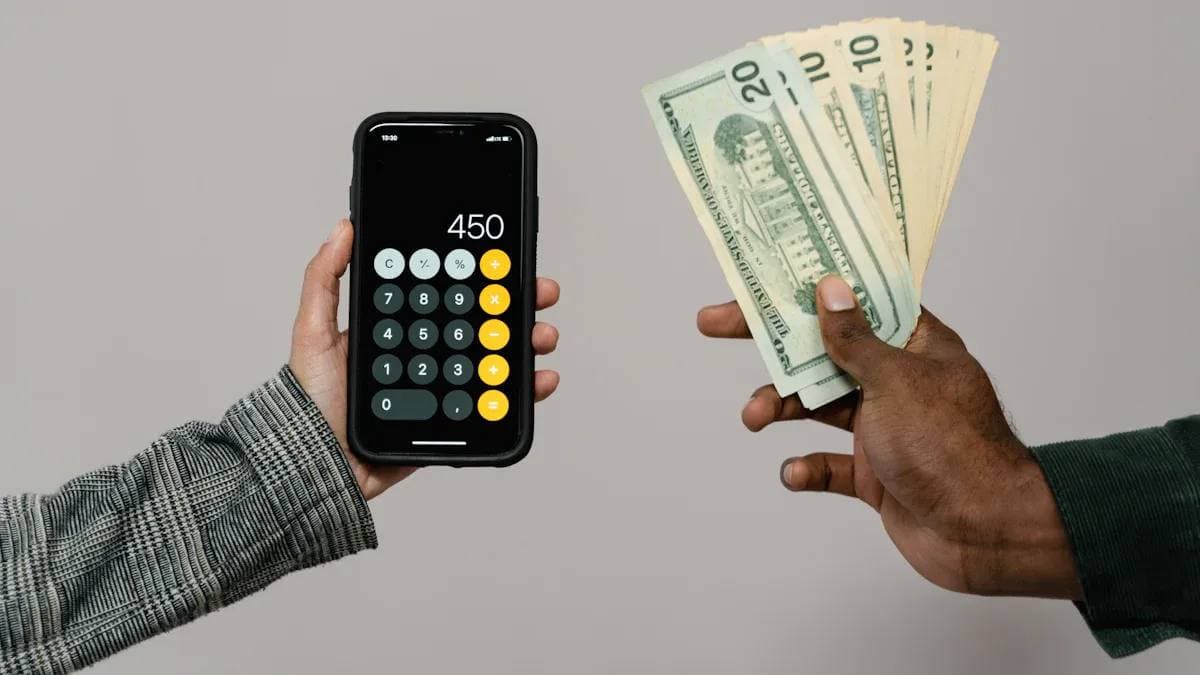- EasyCard
- Trade
- Help
- Announcement
- Academy
- SWIFT Code
- Iban Number
- Referral
- Customer Service
- Blog
- Creator
A Comprehensive Guide to Apple Pay Remittance: The Password to the Security and Efficiency of Convenient Electronic Transfers
As a mobile payment service launched by Apple, Apple Pay not only supports online shopping and offline payments but also enables money transfers, allowing users to easily send money to their friends and relatives. This article will introduce how to send money with Apple Pay, including the setup process, fees, international transfer options, and security. In addition, BiyaPay is also an efficient money transfer method, which will be introduced in detail later.

How to Send Money Using Apple Pay?
The money transfer function of Apple Pay is integrated with the iMessage app, making the transfer operation very intuitive. Users only need to open the iMessage chat window, click on the Apple Pay option, enter the amount, and confirm it using Face ID or Touch ID to complete the transfer.
If the recipient does not have an Apple Pay account, they can still receive the money transfer through a debit card or bank account. This feature greatly enhances the convenience of Apple Pay in terms of money transfers, allowing more users to receive funds seamlessly.
Steps to Set Up Apple Pay for Money Transfers
- Ensure that Apple Pay is set up on the device: Go to “Settings” > “Wallet & Apple Pay” and add an available bank card.
- Select the contact and enter the amount: Find the recipient in iMessage, click on the Apple Pay option, and enter the transfer amount.
- Verify your identity: Confirm with Face ID or Touch ID to ensure a secure transaction.
- Complete the transfer: The funds will be directly sent to the recipient’s Apple Pay account, and the recipient can choose to deposit it into a bank account or use it for payments.
The entire money transfer process usually takes only a few minutes, which is more convenient compared to traditional bank transfers. For users who are not familiar with electronic payments, Apple Pay provides a simple operation process, making it easy for even beginners to get started.
Does Apple Pay Support International Transfers?
Currently, Apple Pay supports money transfers in multiple countries and regions, but the availability of international money transfers still depends on specific banks and payment platforms. Users can link Apple Pay with services such as TransferWise (now Wise) or WorldRemit to achieve international money transfers.
The advantages of using Apple Pay for international transfers include:
- Fast fund arrival: Compared with traditional bank wire transfers, Apple Pay transfers usually only take a few minutes to one working day to complete.
- Lower fees: Compared with the international transfer fees of banks, Apple Pay offers more competitive rates through third-party services.
- No need for complex account information: There is no need to enter the IBAN or SWIFT code. Apple Pay is directly associated with the recipient’s payment account, simplifying the transaction process.
It is worth noting that the regulations of different countries may impose restrictions on the international payment function of Apple Pay. Therefore, it is recommended to check the availability of Apple Pay in the recipient country before making a transfer.
What Fees are Involved in Apple Pay Money Transfers?
The fees for Apple Pay money transfers vary depending on the transfer method, and different payment methods may involve additional charges:
- Debit card or Apple Pay Cash account: Usually, no additional fees are charged, which is the most economical transfer method.
- Credit card transfer: A 3% handling fee needs to be paid, applicable to Apple Pay accounts bound with credit cards.
- International transfer fees: Depending on the specific bank and country, it is usually between 3% and 5%, and may involve foreign currency conversion fees.
To avoid unnecessary fees, users can choose to use a debit card or Apple Pay Cash account for money transfers instead of a credit card. In addition, some banks may charge additional handling fees for Apple Pay transactions, so it is recommended to consult the bank in advance to understand the relevant charging standards.
Is Apple Pay Money Transfer Secure?
Apple Pay uses advanced security technologies to ensure that users’ personal information and bank data will not be leaked during money transfers.
Main security measures:
- Tokenization technology: Apple Pay replaces the real card number with a dynamic token (Tokenization) to prevent the leakage of account information.
- Biometric verification: Face ID or Touch ID ensures that only authorized users can conduct transactions.
- Encrypted transmission: All Apple Pay transactions are end-to-end encrypted to prevent hacker attacks.
- Real-time transaction notifications: Users can check the transfer records at any time and take immediate measures when they find abnormal transactions.
In addition, Apple Pay also provides a fraud protection function to help users apply for a refund or cancel a payment when they encounter unauthorized transactions.
What are the Advantages of Apple Pay Money Transfers Compared to Traditional Transfers?
Compared with traditional bank transfers and other payment methods, Apple Pay money transfers have the following advantages:
- More convenient: There is no need to enter complex bank account information, and the transfer can be completed through iMessage or Siri.
- Faster: Most Apple Pay money transfers can be completed within a few minutes, while traditional bank transfers may take 1-3 working days.
- Safer: Apple Pay uses biometric verification and tokenization technology to reduce the risk of account information leakage.
- Lower fees: Compared with traditional bank wire transfers, Apple Pay offers more competitive rates through third-party payment platforms.
However, Apple Pay is not suitable for all international money transfer scenarios. Some countries and banks may not support Apple Pay transactions. Therefore, before using Apple Pay for money transfers, it is recommended that users confirm whether the recipient’s account supports this service.
Conclusion
Apple Pay provides a convenient and secure way to transfer money, which is suitable for daily transfers and international payments. It combines the advantages of fast fund arrival, low fees, and strong security, making electronic money transfers more efficient. In addition, BiyaPay is also an international money transfer solution worth considering. It supports fund transfers in most regions around the world, has no limit on the amount, and adopts a local money transfer method, greatly reducing the handling fees and the costs of intermediary banks, providing users with a more flexible fund management experience.
*This article is provided for general information purposes and does not constitute legal, tax or other professional advice from BiyaPay or its subsidiaries and its affiliates, and it is not intended as a substitute for obtaining advice from a financial advisor or any other professional.
We make no representations, warranties or warranties, express or implied, as to the accuracy, completeness or timeliness of the contents of this publication.




Contact Us
Company and Team
BiyaPay Products
Customer Services
is a broker-dealer registered with the U.S. Securities and Exchange Commission (SEC) (No.: 802-127417), member of the Financial Industry Regulatory Authority (FINRA) (CRD: 325027), member of the Securities Investor Protection Corporation (SIPC), and regulated by FINRA and SEC.
registered with the US Financial Crimes Enforcement Network (FinCEN), as a Money Services Business (MSB), registration number: 31000218637349, and regulated by FinCEN.
registered as Financial Service Provider (FSP number: FSP1007221) in New Zealand, and is a member of the Financial Dispute Resolution Scheme, a New Zealand independent dispute resolution service provider.




















